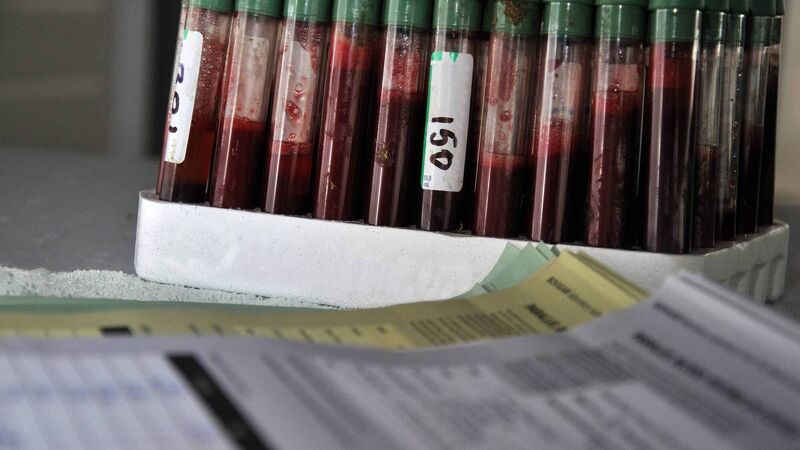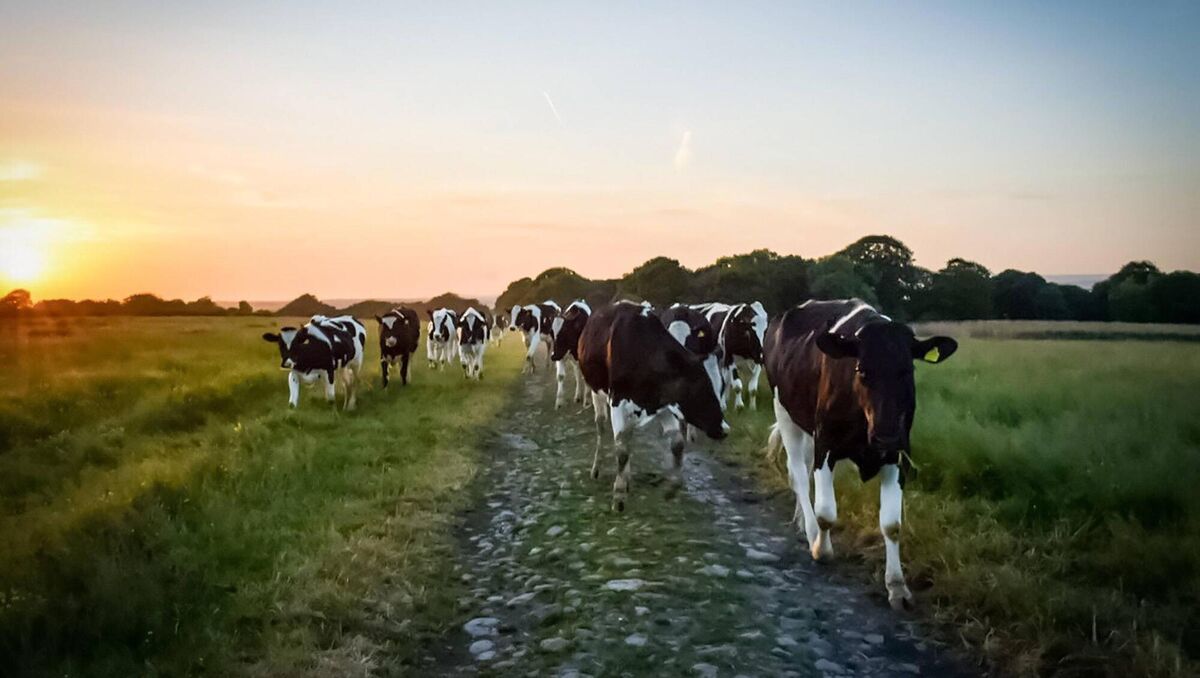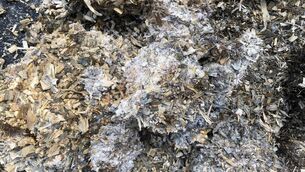Farmers warned not to be complacent about risks of TB spread

If you don’t consider the risks of TB and, at least have a management process on your farm for TB, it is entirely likely that you could buy in infection, or that your herd will go into breakdown because the wildlife isn’t being managed.
The number of TB herd breakdowns is slowly decreasing, but the number of reactors per breakdown is increasing, said Ann Quinn, veterinary inspector and regional manager of the Kilkenny and Waterford Regional Veterinary Office (RVO), on a recent episode of Teagasc's Environmental Edge podcast.
“It’s not that uncommon now, particularly in dairy herds, for the first test to disclose 20 to 30, to 40 reactors". She attributed this to increased animal movement, and perhaps a perception that risks from TB were quite low.
Previously, many of the controls in place for brucellosis were managing TB as well, such as very little movement in dairy breeding animals.
Then dairy expansion occurred rapidly, around the same time as the eradication of brucellosis. Pre-movement testing was not a requirement then, despite the massive movements of breeding animals. “Basically, a lot of farmers just presumed that TB was off the radar,” Ms Quinn said.
“We have a huge change in farming infrastructure” she said. Large areas that had very low cattle density, with mixed farming including tillage, moved over to high-density grazing dairy production, with considerable cattle movement.
“The incidence of TB is rising within herds, and I think it’s certainly a significant risk at farm level now,” Ms Quinn said.
“If you don’t consider the risks of TB and, at least have a management process on your farm for TB, it is entirely likely that you could buy in infection, or that your herd will go into breakdown because the wildlife isn’t being managed, she added.
With about 90% of dairy and beef farmers not currently coping with a TB outbreak, farmers may assume TB is out there, but it's not their problem. But infection is highly possible, unless they are vigilant.
Speaking to Teagasc’s Cathal Somers and Deirdre Glynn on the podcast, Ms Quinn outlined seven key risks.
First, wildlife such as badgers. The aim being to have healthy, vaccinated badgers kept separate from cattle.
“We have certainly established that the badger is an excellent host for TB. Badgers have a very low immune system,” Ms Quinn explained.
“A badger that gets TB will die from TB and while they’re getting sick, everything that they secrete and excrete, all of their urine, their faeces, any coughing or any saliva discharge from their mouth area, will carry TB. They will pass TB on to cattle very very easily.”
Ms Quinn said the Department of Agriculture asks farmers to identify badger setts on their land, to fence them off, so farm animals cannot come in contact with the badgers, and to inform the department, so the badger database can be updated.
Badgers infected with TB will readily pass it to cattle on an adjacent farm. In an area with a high occurrence of TB, badgers will be removed. There is also a badger vaccination programme.
Deer in specific areas, such as East Wicklow, can also be a significant TB source.
The second risk is bringing new animals into the herd. “Our research has shown that the more movements breeding animals have, the more likely they are to fail an intradermal skin test. Choose carefully and try to buy animals from herds that haven’t been in breakdown for at least three years.”
Thirdly, Ms Quinn emphasised the importance of pre-movement testing. “There is no way anyone should consider buying in an animal and then testing it in their herd, because if it goes down, you’ve lost your trading status, you’ve bought in an infected animal.”
The fourth risk area is spread from contiguous herds. To maintain a bio-secure herd, good fencing is essential.
The fifth risk is environmental spread. “TB will build up in the environment very very easily.”
Cleaning and disinfection during breakdown is a daunting task, but it is really important. Regular cleaning of feeding areas, and particularly of water troughs in the fields, is vital. Sharing machinery can also be a big risk.
“If your contractors are coming in to spread slurry, the first half-load shouldn’t be somebody else’s slurry,” Ms Quinn said.
Biosecurity is key, with contractors given access to cleaning and disinfection points when they’re coming and going. Such procedures reduce the risk of introducing TB via infected slurry, or on the wheels of contractors’ machinery.
The final, seventh major risk outlined by Ms Quinn is residual infection. The longer a farm retains animals that went through a breakdown and were hence exposed to TB, but subsequently tested clear, there is a significant risk they will break down. They may have "walled off" the TB, and as they age, the higher their risk.
Animals with inconclusive test results are also very high risk. “There’s a high likelihood that they will develop TB and spread it to other animals,” Ms Quinn said. She recommended inconclusives be removed.
When a reactor is detected, the farm is restricted immediately, no animals can move in or out until the herd passes two reactor re-tests, 60 days apart.
“Once you have reactors disclosed in a test with your vet, the report will go back into the RVO". The RVO will contact the farmer and commence a valuation process.
The infected animals will be removed and any additional infected animals will be identified. “We’re also looking to see where did the infection come from, and what can we do to ensure that this farmer will go clear as soon as possible.
"And it’s really important that we manage the disease process very quickly and try and reduce in-herd spread,” Ms Quinn said.
Bovine TB is caused by the bacterium Mycobacterium bovis, which can also cause disease in humans, deer, goats, pigs, cats, dogs and badgers. But BCG vaccine since the 1960s has resulted in a very low possibility of humans picking up TB from infected animals.
“The most important thing is that dairy farmers, in particular, do not drink unpasteurised milk,” Ms Quinn advised.
TB is a respiratory disease, largely spread by breathing in infected air from contaminated animals, but can also spread via urine or faeces, sputum or saliva. TB mainly spreads by movement of infected animals into previously clear herds, contact with infected wildlife or other infected animals, consuming contaminated feed, or machinery moving between farms.
“The difficulty with TB is that it’s a very individual disease process. If I put 100 animals in a shed and they were all exposed to the same TB strain, at the same infective dose, every animal will react differently and it’s very difficult to pinpoint when each animal will become infected, and then if they’re infected, will they actually become infective, so that they’ll pass on that TB to other animals.”

An infected animal tries to wall off TB within the lymph nodes, particularly in the respiratory tract. “What that really means in that they get a large abscess and they keep walling it off”.
Those animals will mostly fail the TB test, but may or may not infect other animals. “If the animals are under pressure, if they’re in late pregnancy, if they’re in the first 60 days post-calving when they’ve a negative energy balance and they’re milking off their backs, or as they get older, or if there’s a disease breakdown like mastitis or lameness, individual animals with walled-off TB can become shedders,” Ms Quinn explained.
"A TB test, very well done, is any farmer’s best way of knowing what the infection level is in their particular herd, or in animals they’re buying in."
If the test is not done carefully, and one or two infected animals are missed, an explosive breakdown could ensue, she said.
The TB eradication scheme is a pre-requisite of trading in cattle —, all cattle must undergo one test for TB a year. If the test is not done, a farm is restricted.
“Avian and bovine tuberculin are injected, the avian in the top injection and the bovine in the bottom injection. It’s a comparison then, one to the other, to determine whether or not the animal has TB,” Ms Quinn explained.
“If an animal passes the skin test, it doesn’t necessarily mean that the animal doesn’t have TB. It’s really important that the skin test is done very well, and it’s also important to realise that animals that are very early infected with TB, or animals that are very significantly infected, may not react to that skin test”.
“A clear test is great, but you may have animals in that herd that have TB, they just haven’t reacted to the test. So we have a blood test that we will use then in breakdown herds. This will detect animals at an early stage of detection, or animals that did not react to the skin test.
Ms Quinn worked for 13 years in a factory receiving reactor animals, and said no lesions at the factory does not mean TB is absent. She cited an example of 10 reactors in a herd of 100 failing the skin test, being sent for slaughter, where they are separated in the factory from other animals and undergo additional checks, especially for lesions.
“If the TB is quite recent in that herd, we would expect a third of those animals, three or four, should show visible lesions”.
All animals try to wall off the infection as their first response. That will show at postmortem as a large abscess in a lymph node.
If all 10 reactors had lesions, Ms Quinn explained, it would be surmised that there might be 20 more with early infection in the herd.










